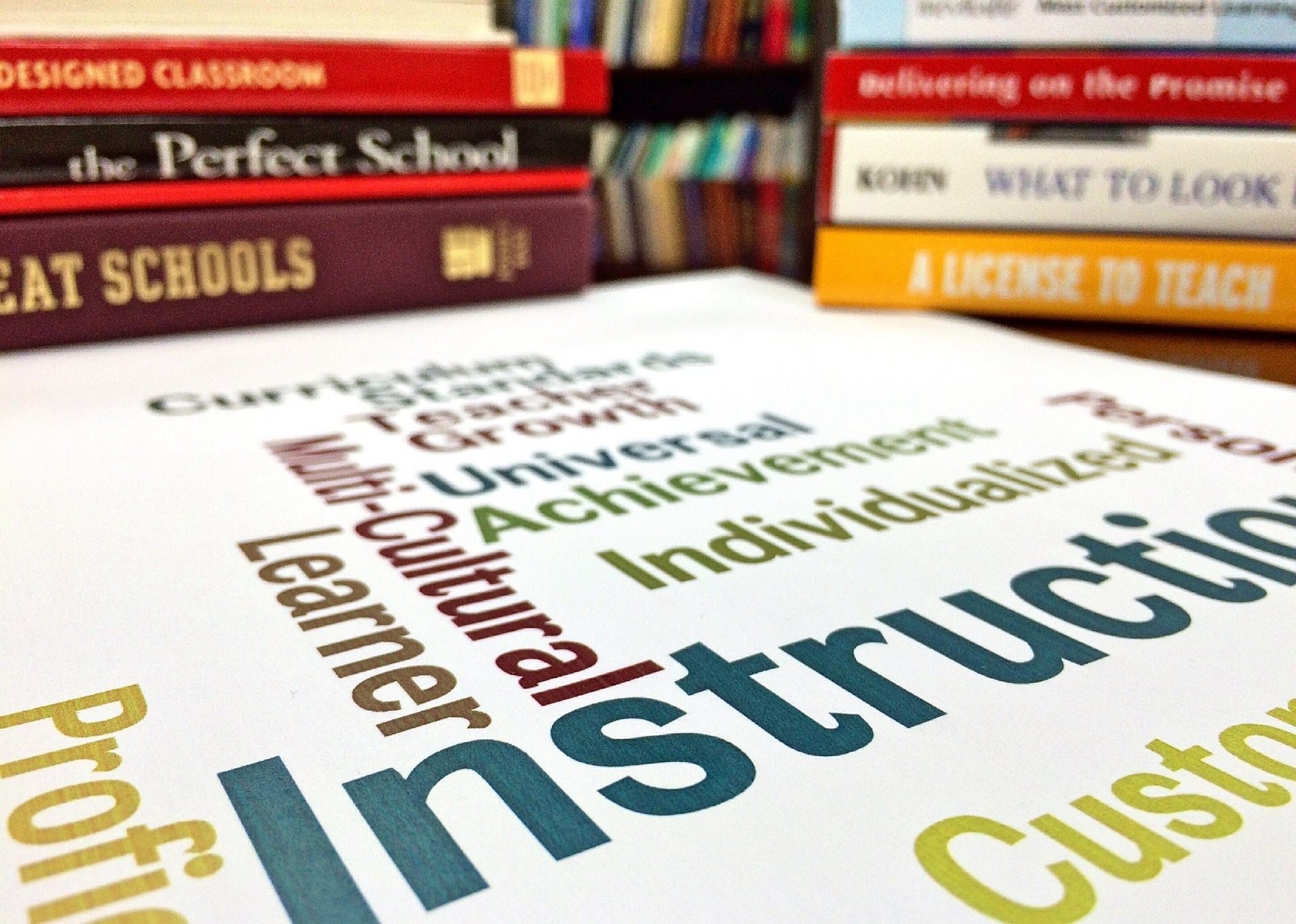Dear School District Administrators,
Most open letters are written as a passive criticism or open critique of a large institution. I have no wish to be passive in my critique and observations. They are intended to spur conversation and reflection. These are the tools of our trade as teachers. I was hired to critique and foster reflection.
After studying and researching in your administrative offices over the previous year, you have embraced personalized learning as a targeted result, as we deploy technology throughout the district. It is a goal widely acknowledged to be systemic in scope and paradigm shifting by its nature. So with all sincerity, I applaud your willingness to step bravely into a well-reasoned approach to 21st-century learning.
It is widely agreed that personalized learning is also a new pedagogical mindset that must extend beyond the classrooms; that fact pushes forward my primary question “How does the leadership of a personalized learning environment shift itself to accommodate the new network of change?”
 As I continue learning to apply a more personalized approach to my teaching. I have found that many of those same skills can be used to reflect and evaluate options. So I have tried here to apply a similar cognitive approach, an open critique and sincere question on eight observations I have noted as my school, and our district has embarked on a journey of blended and personalized learning.
As I continue learning to apply a more personalized approach to my teaching. I have found that many of those same skills can be used to reflect and evaluate options. So I have tried here to apply a similar cognitive approach, an open critique and sincere question on eight observations I have noted as my school, and our district has embarked on a journey of blended and personalized learning.
In the classrooms we are, approaching the close of another school year, you at the District offices are approaching the hiring season. As you do so, I would ask that you perhaps take some time to consider the qualities your prize as you develop a leadership team for the future. It is commonly understood that there is a shortage of new teachers in the US, as well as a disconcertingly high number of experienced professionals leaving our classrooms. But that is not the case for program administrators and principals. The number of people earning Masters Degrees’ in educational leadership or seeking an administrative endorsement is higher now than at any time in the past 25 years. According to the US Bureau of Labor Statistics
You have the opportunity to look broadly and consider carefully those that will help lead us through this systemic paradigm shift.
Personalized learning achieved through a blended curriculum keeps students engaged; it pushes them to grow and demands that they understand both themselves as learners and our curriculum as it pertains to their lives. In a very real sense, PL embodies the vision that led so many of us into teaching as a profession. The opportunity to connect not just with a child, but with a child through teaching and learning.
 Personalization is full of hard data, human connections and an intricate web of lessons, apps, and projects. Peel back that top layer and the overwhelming nature of the idea begins to surface, PL disseminates the control of the learning within a classroom, the students practicing to take control of their own path. The teacher building supports and taking them away.
Personalization is full of hard data, human connections and an intricate web of lessons, apps, and projects. Peel back that top layer and the overwhelming nature of the idea begins to surface, PL disseminates the control of the learning within a classroom, the students practicing to take control of their own path. The teacher building supports and taking them away.
That complex dance of adding and subtracting scaffolding while it is being used is being successfully done. But it is severely limited when it has to fall within blocks of time and for a set number of minutes each week.
-
Where once our administration needed to be skilled at defining, defending and delineating blocks of time we are now asking them to find flexibility within a rigid structure and extra time where the was never enough.
? How do we as a district support the required complexity of a school schedule while still offering the time to rigorously dig deeply into an area of study?
Underneath the popular jargon and interview buzzwords that you will hear, like Grit and Mindset, are classrooms where those life skills are being developed. In those rooms, both students and teachers are failing, examining their efforts and sometimes failing again. Learning to fail and from failure is important for real success.
-
As an institution, we are built to reward success and admonish failure. As a culture of educators, we are largely populated by those that thrived in that climate exemplifying their own successes and hiding their failures.
? How do we insure ourselves and reassure others that our district leadership understands the role of failure and exploration as we move into a new mindset?
We do not work in an industry where taking chances, innovating or finding a creative alternative is celebrated, least of all at the administrative level. Rather we as a profession, are accurately profiled as safe, steady, stable, predictable types. Our administrators even more so than those of us in the classroom.
-
We are now in an era where we will need to be inventive, take calculated chances and create new ideas. We will need to look for those traits in our leaders as we move into uncharted paths with impressionable cargo.
? What are the important character trait of a 21st-century school administrator, and how do we ensure that the status quo does not continue to be the status quo?
? How will the changing power dynamic in classrooms impact both our schools and our district as a whole?
One of the most powerful aspects of personalized learning is that it is, out of necessity, powered from the classroom up. Teacher-leaders are the ones moving the bar and setting the standards. Those classroom maestros will need strong support and stronger feedback.
- Please remember as you consider the next steps for those that will be leading the dwindling number of magnificent classroom teachers that we are a profession built on the artful combination of personal connections, honest feedback, and transparent agendas with all of our students, not simply those in the most need.
? How can we use our transition into personalized learning, as an opportunity to both support and capitalize on the prowess of our teacher-leaders?
The devices, the web resources, the alignment of lessons and project to a standard, all of these pieces are new and as unfamiliar as they are integral to this shift. As a teacher, I know there is no shame in saying I don’t know, and that I will not be able to master all of those elements of the job I love without support. I am confident and comfortable say that my principal and school as a whole will need support as well.
It is not an uncommon critique to observe that the current structure of our educational system was built with management in mind rather than support and growth. Nor is it an uncommon refrain for teachers ask for support. It is uncommon, however, to have the opportunity to create the needed change.
? What structures of support can we enhance or establish to best help our schools thrive as centers of blended and personalized teaching?
? How do we find a way to structure and support creativity while still managing growth and learning?
If you are overwhelmed by the questions and standards set before you if you feel as though the task is disproportionate to the tools available. Please know that I, and every classroom teacher, that works for you is familiar with those insecurities. We grapple with them every fall, we understand, from experience I can tell you that the while the challenge never fades the overwhelmed feeling does.
With sincere thanks for all that you do to move us forward,
Brian Cleary @oldbrainteacher



